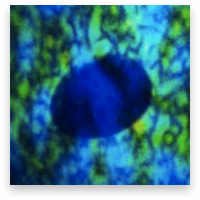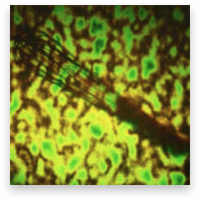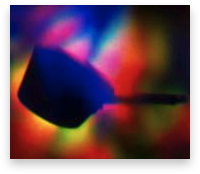Duped by their Art
David Briers

We all enjoy a clever piece of benign deception. We are fascinated by anything pretending to be something else––stick insects, rock formations that look like human heads, drag artists––the more convincing the artifice the better, as long as the deception is not complete. In fact, we are deceived every day by the craft of TV advertisers: we never realise it is yellow paint and not real custard, but what pleasure and insight does that knowledge provide? To appreciate a deception, we have to know we are being fooled.

In art, the long and fairly respectable tradition of trompe l'oeil (deception of the eye) painting embodies this proclivity in one of its most undisguised forms. When French noblemen of the 17th century commissioned artists to paint detailed images of flowers, it was not because real flowers were too expensive. It was so they could show off the painter's skill and artfulness to their friends, and make their brain-cells tingle as they flipped between seeing apparent reality and witty artifice.
Holography is perhaps the ultimate trompe l'oeil But the artist is able to play with the fact that we know that holograms are illusions: we may be tempted––and many do try––to look behind or grab hold of that floating pair of spectacles, but we are not surprised when our fingers encounter only thin air. It was worth trying.

The subject matter of their work often belies our expectations of holography as the high-tech art of the future. A pair of spectacles, an egg whisk, a string vest––are these fitting subjects for holography? Apart from being chosen for their technical suitability as holographic subjects––they are rigid and inanimate, or let light through them––our attention is focussed on mundane objects normally passed over in daily life. As holograms they become transformed.
The whisk, egg and saucepan in Wenyon & Gamble's recent triptych of holograms relate to the 'speckle' pattern that stands either behind or in front of each object. This pattern occurs, if allowed, as a side effect of the laser light used in the holographic process. The random shapes of its reticulations cannot be controlled, but the overall size and colour of the pattern can. The patterns are chosen here to be associated with such properties as boiling, heat or as a completely artificial 'play of light'.
In the free-standing 'double-plate' works, Propeller and Expander, the same patterns are deployed to give less literal associations of turbulence or even violence, deflated when we eventually realise that these are not fearsome war machines but mirror-images of kitchen utensils.

Some of the pieces in this show were made by the artists separately, before they began working together in 1983. Cheap items of underwear or footwear often furnish the subjects of Susan Gamble's holograms. Her Cultured Vest is just that––a string vest in front of a rainbow of optically created colours, the form of the vest adding its own inherent psychedelic moiré effects.
Michael Wenyon's holograms tend to be simple in visual conception––too simple, you might say at first. But his tellingly-named Second Look demonstrates how this simplicity masks cunningly devised arrangements which could not he so effectively achieved, if at all, in any other medium. At first we may see only red luminosities in a boxed space––a minimal and 'pure' abstract composition. But as we move to one side we catch sight of a pair of spectacles hidden down the left-hand side of the 'box'. What are they doing there? Are they the real subject of the piece, or an intruder? And why are we now spending so much time looking at an item which is usually looked through?
Wenyon & Gamble's recent cooperative Miniatures are framed in white plastic set-squares, suggestive of the scientific end of holographic research. Otherwise, however, they are redolent of Victorian daguerrotypes with their ornate presentation cases. They remind us that Wenyon & Gamble's operation has much in common with that of the first photographers. Like their nineteenth-century counterparts, the two modern artists have to make their own equipment, striving in a slow and painstaking manner to capture the likenesses of static objects.
While energised with the exploratory spirit that infuses the first few British artists to be working in this medium, Wenyon & Gamble refuse to he in awe of the technology behind holography. But as artists they do not merely reiterate what might be shown just as well in paint.
Substitute 'holography' for 'painting' in this quote from the artist Jean Dubuffet: 'Many people approach painting convinced of finding a transcription of that which the painter sees. Some painters may, in fact, aim to reproduce what they see, but if so the activity is difficult to explain. If they do see, they are satisfied; why then go to all that trouble? To make others see? Very kind of them, indeed.'
Wenyon & Gamble are not trying to be kind. They do a lot more than just make us see; in so doing, they make us look a lot harder.
David Briers
August 1984
